Master Forex trading with the Master trading-forex-investing-haris-hayat/">Forex trading with the Wyckoffanalytics – Wyckoff Trading Course – Spring Series 2019Wyckoffanalytics – Wyckoff Trading Course – Spring Series 2019 course, available for just course, available for just Original price was: $998.00.Original price was: $998.00.$$84.0084.00Current price is: $84.00.Current price is: $84.00. on on GripForex.comGripForex.com! Specializing in financial markets, we offer premium downloadable Forex courses in ! Specializing in financial markets, we offer premium downloadable Forex courses in Forex and TradingForex and Trading. Learn strategies from experts, trade smarter, and save over 80%. Get a grip on your trading future!. Learn strategies from experts, trade smarter, and save over 80%. Get a grip on your trading future!
Salepage link: Salepage link: At HERE. Archive:
Wyckoffanalytics – Wyckoff Trading Course – Spring Series 2019
Description: In the first four sessions of the WTC, you will learn how to to read market structure by applying Wyckoff’s cardinal insights regarding the interplay of price, volume and time. Understanding market structure allows you to anticipate coming price action. You will learn to identify and analyze accumulation, distribution, re-accumulation and re-distribution – the key trading ranges that power trends. You will also learn Wyckoff Method trade set-ups based on market structure, how to enter a new or an existing trend, and how to recognize in advance when a trend is likely to end.
Description: In the first four sessions of the WTC, you will learn how to to read market structure by applying Wyckoff’s cardinal insights regarding the interplay of price, volume and time. Understanding market structure allows you to anticipate coming price action. You will learn to identify and analyze accumulation, distribution, re-accumulation and re-distribution – the key trading ranges that power trends. You will also learn Wyckoff Method trade set-ups based on market structure, how to enter a new or an existing trend, and how to recognize in advance when a trend is likely to end.
TWTR – WTC price cycle.jpg
TWTR – WTC price cycle.jpg
Get
Get Wyckoffanalytics – Wyckoff Trading Course – Spring Series 2019 download
The Price Cycle: Accumulation, Mark-Up, Distribution and Mark-Down
The Price Cycle: Accumulation, Mark-Up, Distribution and Mark-Down
Change of Character in an established trend: identifying a change from a trending to a non-trending environment
Change of Character in an established trend: identifying a change from a trending to a non-trending environment
Change of Character in a trading range: identifying price and volume action signaling the initiation or continuation of a trend
Change of Character in a trading range: identifying price and volume action signaling the initiation or continuation of a trend
Trading ranges that generate big trends: accumulation and distribution
Trading ranges that generate big trends: accumulation and distribution
A key concept in Wyckoff Method analysis of trading ranges: Phases
A key concept in Wyckoff Method analysis of trading ranges: Phases
Phase anatomy: Wyckoff Method events (e.g., climaxes, tests, springs, upthrusts, signs of strength)
Phase anatomy: Wyckoff Method events (e.g., climaxes, tests, springs, upthrusts, signs of strength)
Identifying phases in accumulation and distribution
Identifying phases in accumulation and distribution
Characteristics of re-accumulation and re-distribution trading ranges
Characteristics of re-accumulation and re-distribution trading ranges
Distinguishing re-accumulation from distribution and re-distribution from accumulation
Distinguishing re-accumulation from distribution and re-distribution from accumulation
Three Wyckoff Method rules for trades based on market structure
Three Wyckoff Method rules for trades based on market structure
Delineating Buying and Selling Zones using the Wyckoff Method, including entry and exit strategies
Delineating Buying and Selling Zones using the Wyckoff Method, including entry and exit strategies
Exercises and homework assignments
Exercises and homework assignments
Mini-course Duration: 4 online sessions
Mini-course Duration: 4 online sessions
Dates: Monday afternoons; January 7, 14, 21 and 28Dates: Monday afternoons; January 7, 14, 21 and 28
Time: 3:00-5:30 p.m. (Pacific Time)Time: 3:00-5:30 p.m. (Pacific Time)
Cost: $998 for the entire January-April cycle (15 sessions); WTC alumni rate: $700 only for the whole course!Cost: $998 for the entire January-April cycle (15 sessions); WTC alumni rate: $700 only for the whole course!
“Studying Wyckoff under Roman is one of the best decisions that I have made in my life. While progressing through the Wyckoff Trading Course, I earned 15x the money that I paid for tuition.” (PL – WTC graduate)“Studying Wyckoff under Roman is one of the best decisions that I have made in my life. While progressing through the Wyckoff Trading Course, I earned 15x the money that I paid for tuition.” (PL – WTC graduate)
WTC Part II (Spring 2019) – SUPPLY AND DEMANDWTC Part II (Spring 2019) – SUPPLY AND DEMAND
Description: Here Mr. Bogomazov will focus in detail on identifying supply and demand on any chart. The Wyckoff Method is based on the assumption that all freely traded markets are governed by supply and demand. In today’s markets, as in Wyckoff’s time, large professional interests dominate supply and demand. Having the ability to accurately read supply and demand on a chart will allow you to make better decisions about timing your entries and exits and to join the large operators rather than being caught on the wrong side of a trade.Description: Here Mr. Bogomazov will focus in detail on identifying supply and demand on any chart. The Wyckoff Method is based on the assumption that all freely traded markets are governed by supply and demand. In today’s markets, as in Wyckoff’s time, large professional interests dominate supply and demand. Having the ability to accurately read supply and demand on a chart will allow you to make better decisions about timing your entries and exits and to join the large operators rather than being caught on the wrong side of a trade.
Concepts in supply and demand – the forces that move all marketsConcepts in supply and demand – the forces that move all markets
Who is the composite operator and how do his actions in the market affect supply and demand?
Who is the composite operator and how do his actions in the market affect supply and demand?
Volume and spread analysis
Volume and spread analysis
Variations of spread and volume in different market environments
Variations of spread and volume in different market environments
Effort (volume) versus results (price action) – confirmation and discordance both predict future price behavior
Effort (volume) versus results (price action) – confirmation and discordance both predict future price behavior
Volume analysis and schematics in trading ranges
Volume analysis and schematics in trading ranges
Volume characteristics in different phases of accumulation and distribution
Volume characteristics in different phases of accumulation and distribution
Wyckoff’s springboard: when price is poised to move
Wyckoff’s springboard: when price is poised to move
Tradable volume patterns
Tradable volume patterns
Exercises and homework assignments
Exercises and homework assignments
Mini-course Duration: 4 online sessions
Mini-course Duration: 4 online sessions
Dates: Monday afternoons; February 4, 11, 18, and 25Dates: Monday afternoons; February 4, 11, 18, and 25
Time: 3:00-5:30 p.m. (Pacific Time)Time: 3:00-5:30 p.m. (Pacific Time)
Prerequisite: WTC Part I (Wyckoff Structural Price Analysis) or consent of instructorPrerequisite: WTC Part I (Wyckoff Structural Price Analysis) or consent of instructor
“Roman, without question, your instruction is exceptional and your patience endless. You have such a mastery of this material…[and] offer exceptional value both for the knowledge and time that is made available to students. There is no doubt that you walk in the noble footsteps of Wyckoff himself: developing and sharing knowledge without reserve.” (JC – WTC graduate and current WMD participant)“Roman, without question, your instruction is exceptional and your patience endless. You have such a mastery of this material…[and] offer exceptional value both for the knowledge and time that is made available to students. There is no doubt that you walk in the noble footsteps of Wyckoff himself: developing and sharing knowledge without reserve.” (JC – WTC graduate and current WMD participant)
WTC Part III (Spring 2019) – RELATIVE AND COMPARATIVE STRENGTHWTC Part III (Spring 2019) – RELATIVE AND COMPARATIVE STRENGTH
Description: Relative and comparative strength are Wyckoff Method concepts that can help you select the top stocks in the best sectors to trade, particularly at market turns. In this part of the course, you will learn how to apply these concepts to identify candidates for long or short trades, and how they can also be used to improve the timing of your entries and exits.Description: Relative and comparative strength are Wyckoff Method concepts that can help you select the top stocks in the best sectors to trade, particularly at market turns. In this part of the course, you will learn how to apply these concepts to identify candidates for long or short trades, and how they can also be used to improve the timing of your entries and exits.
Relative and comparative strength analysis: how to choose the best vehicles to tradeRelative and comparative strength analysis: how to choose the best vehicles to trade
Use of comparative strength for stock selection in the Wyckoff Method
Use of comparative strength for stock selection in the Wyckoff Method
Improving the Wyckoff Method’s comparative strength analysis in trading ranges
Improving the Wyckoff Method’s comparative strength analysis in trading ranges
Differences between relative and comparative performance
Differences between relative and comparative performance
Using changes in relative strength or weakness to spot sectors and stocks to trade
Using changes in relative strength or weakness to spot sectors and stocks to trade
Creating selection filters using relative and comparative strength to identify high-probability trades
Creating selection filters using relative and comparative strength to identify high-probability trades
Exercises and homework assignments
Exercises and homework assignments
Mini-course Duration: 4 online sessions
Mini-course Duration: 4 online sessions
Dates: Monday afternoons; March 4, 11, 18, and 25Dates: Monday afternoons; March 4, 11, 18, and 25
Time: 3:00-5:30 p.m. (Pacific Time)Time: 3:00-5:30 p.m. (Pacific Time)
Prerequisite: WTC Parts I and II (Wyckoff Structural Price Analysis and Supply and Demand) or consent of instructorPrerequisite: WTC Parts I and II (Wyckoff Structural Price Analysis and Supply and Demand) or consent of instructor
“If you want to trade and trade well, the knowledge that you gain from the WTC is invaluable. You will really understand the price/volume action of the markets.”“If you want to trade and trade well, the knowledge that you gain from the WTC is invaluable. You will really understand the price/volume action of the markets.”
(DF – WTC graduate)
(DF – WTC graduate)
WTC Part IV (Spring 2019) – PUTTING IT ALL TOGETHER: DEVELOPING A WYCKOFF TRADING PLANWTC Part IV (Spring 2019) – PUTTING IT ALL TOGETHER: DEVELOPING A WYCKOFF TRADING PLAN
Description: The previous sections of the WTC incorporate foundational elements of the Wyckoff Method and are designed to allow you to immediately apply standalone concepts to your own trading. For students who want to integrate these elements more deeply, Mr. Bogomazov teaches how to create a Wyckoff trading plan in the final three WTC sessions. Because the content of this section relies so heavily on materials presented previously, participation will be limited to students who have attended WTC Parts I, II and III.Description: The previous sections of the WTC incorporate foundational elements of the Wyckoff Method and are designed to allow you to immediately apply standalone concepts to your own trading. For students who want to integrate these elements more deeply, Mr. Bogomazov teaches how to create a Wyckoff trading plan in the final three WTC sessions. Because the content of this section relies so heavily on materials presented previously, participation will be limited to students who have attended WTC Parts I, II and III.
Using filters to improve selection of stocks or options to tradeUsing filters to improve selection of stocks or options to trade
Relative strength filters
Relative strength filters
Structural filters
Structural filters
Supply and demand filters
Supply and demand filters
Using multiple filters to pinpoint the best trades and times to open positions
Using multiple filters to pinpoint the best trades and times to open positions
Market Analysis as a Filter – timing entries in sync with the market
Market Analysis as a Filter – timing entries in sync with the market
Using Wyckoff Method concepts to create a trading plan
Using Wyckoff Method concepts to create a trading plan
Back-testing your trading plan with a pre-formatted Excel template – key variables to track
Back-testing your trading plan with a pre-formatted Excel template – key variables to track
Trading tactics for your Wyckoff trading plan: entries, position management, and exits
Trading tactics for your Wyckoff trading plan: entries, position management, and exits
Exercises and homework assignments
Exercises and homework assignments
Mini-course Duration: 3 online sessions
Mini-course Duration: 3 online sessions
Dates: Monday afternoons; April 1, 8 and 15Dates: Monday afternoons; April 1, 8 and 15
Time: 3:00-5:30 p.m. (Pacific Time)Time: 3:00-5:30 p.m. (Pacific Time)
Prerequisite: WTC Parts I, II and III, or consent of instructorPrerequisite: WTC Parts I, II and III, or consent of instructor
GetGet Wyckoffanalytics – Wyckoff Trading Course – Spring Series 2019 download
Strengthen your trading skills with the Strengthen your trading skills with the Wyckoffanalytics – Wyckoff Trading Course – Spring Series 2019Wyckoffanalytics – Wyckoff Trading Course – Spring Series 2019 course at course at GripForex.comGripForex.com! Gain lifetime access to expert-led Forex content, designed to enhance your market understanding and profitability.! Gain lifetime access to expert-led Forex content, designed to enhance your market understanding and profitability.
- Lifetime Access:Lifetime Access: Unlimited, permanent access to your Forex trading courses. Unlimited, permanent access to your Forex trading courses.
- Significant Savings:Significant Savings: Enjoy prices up to 80% lower than retail. Enjoy prices up to 80% lower than retail.
- Secure Transactions:Secure Transactions: Your financial details are protected during payment. Your financial details are protected during payment.
- Practical Trading Skills:Practical Trading Skills: Acquire actionable strategies for real-world Forex markets. Acquire actionable strategies for real-world Forex markets.
- Instant Access:Instant Access: Begin your trading education immediately after purchase. Begin your trading education immediately after purchase.
- Learn Anywhere:Learn Anywhere: Access your Forex courses on any device. Access your Forex courses on any device.
Take control of your trading with GripForex.com!Take control of your trading with GripForex.com!
Additional information
| Status | Available |
|---|
Only logged in customers who have purchased this product may leave a review.

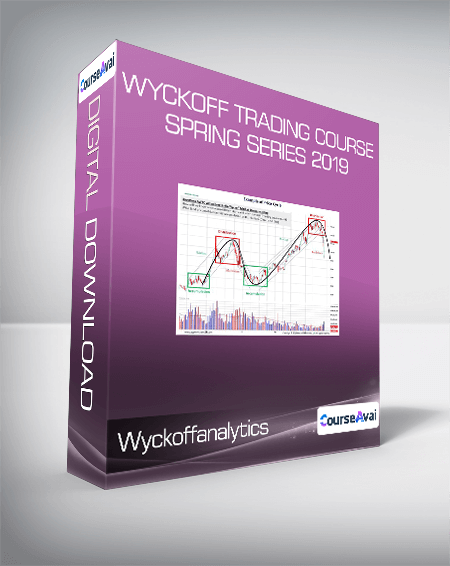

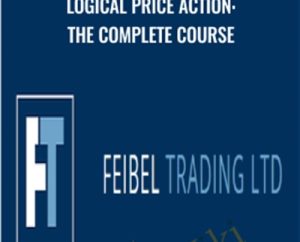


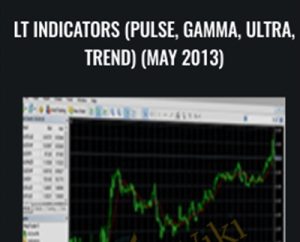
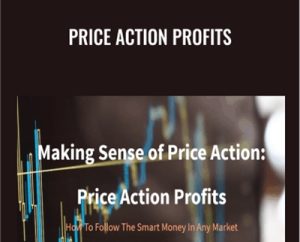

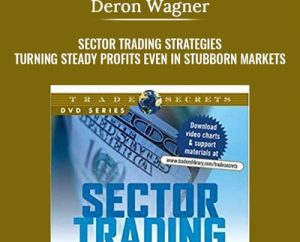
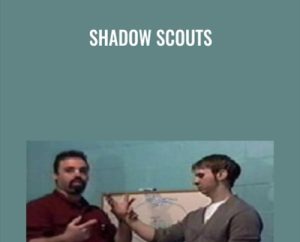

Reviews
There are no reviews yet.